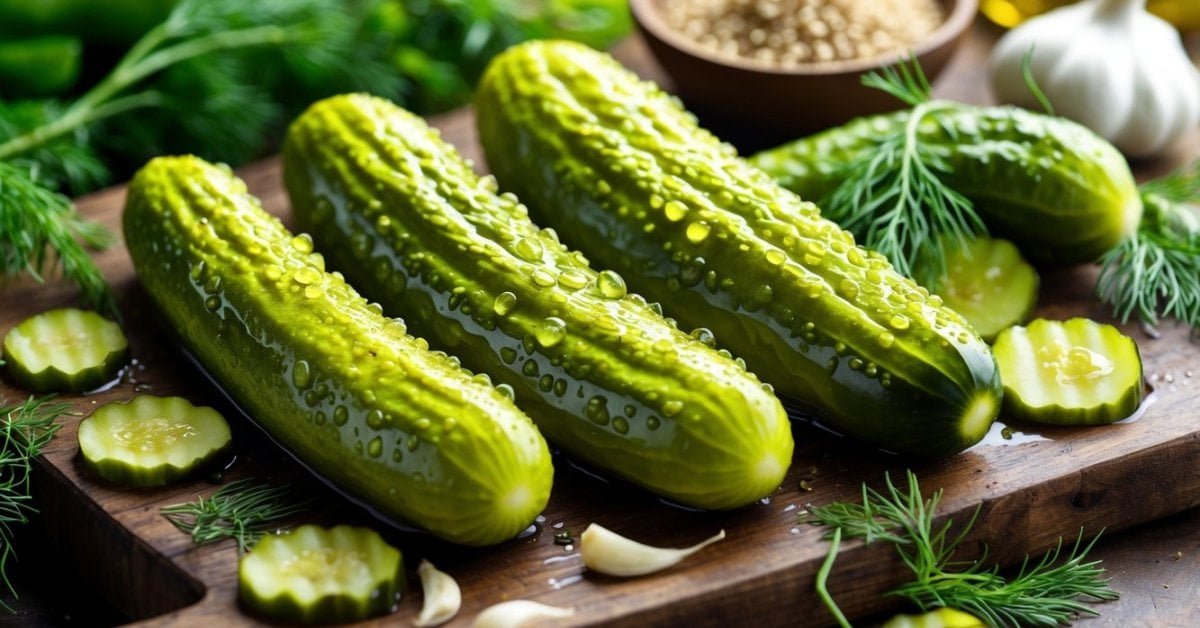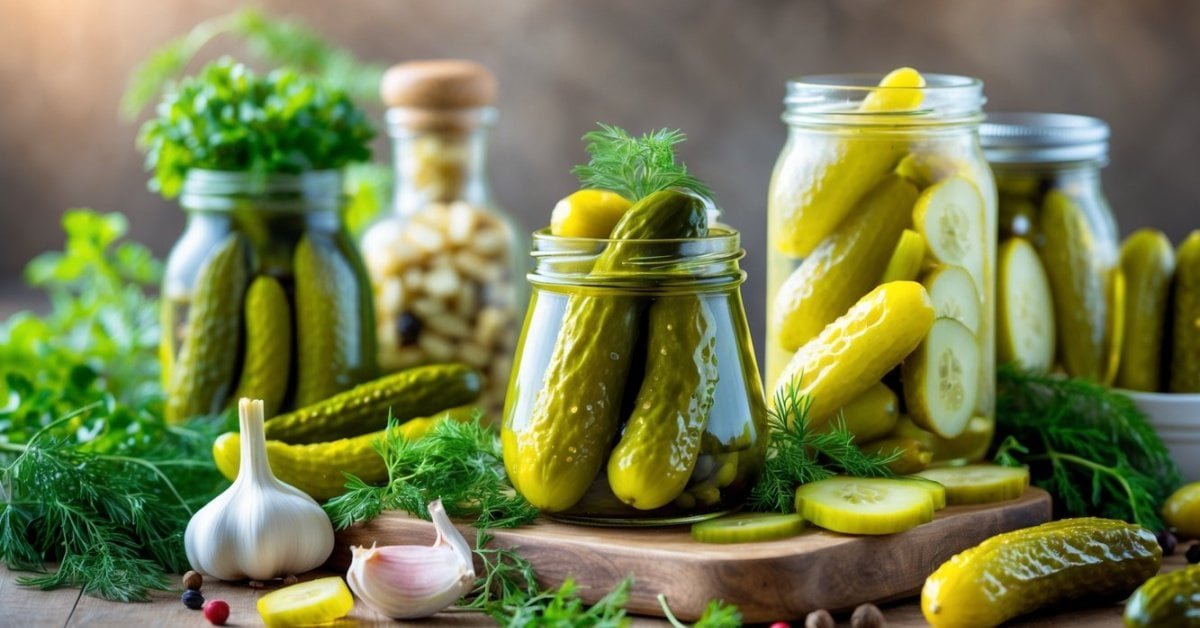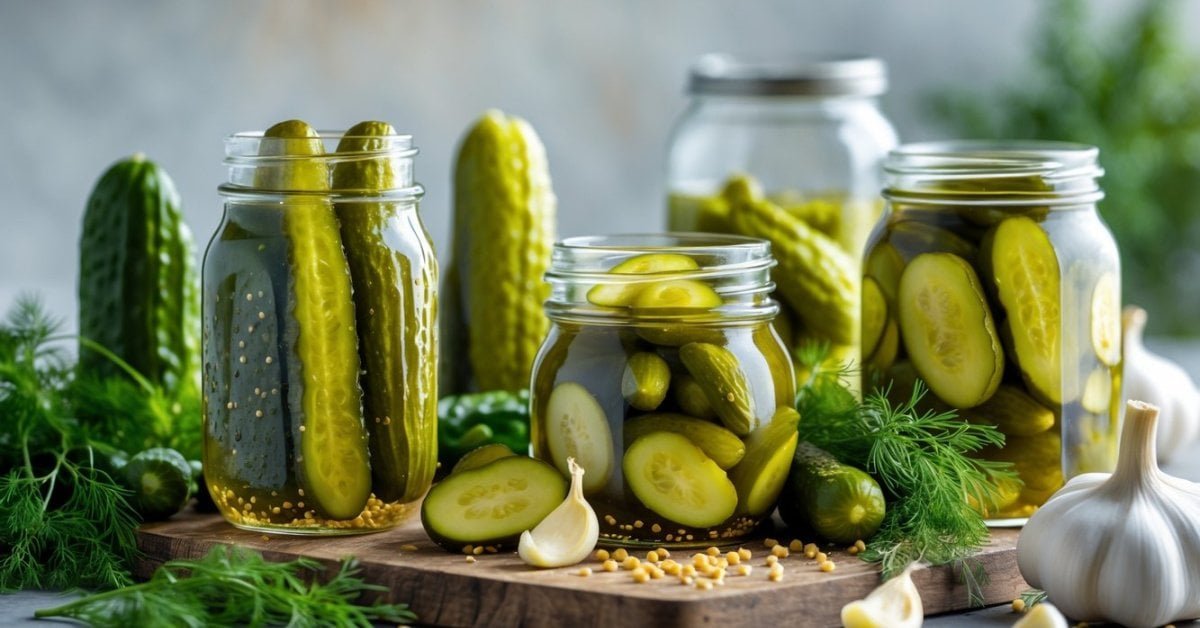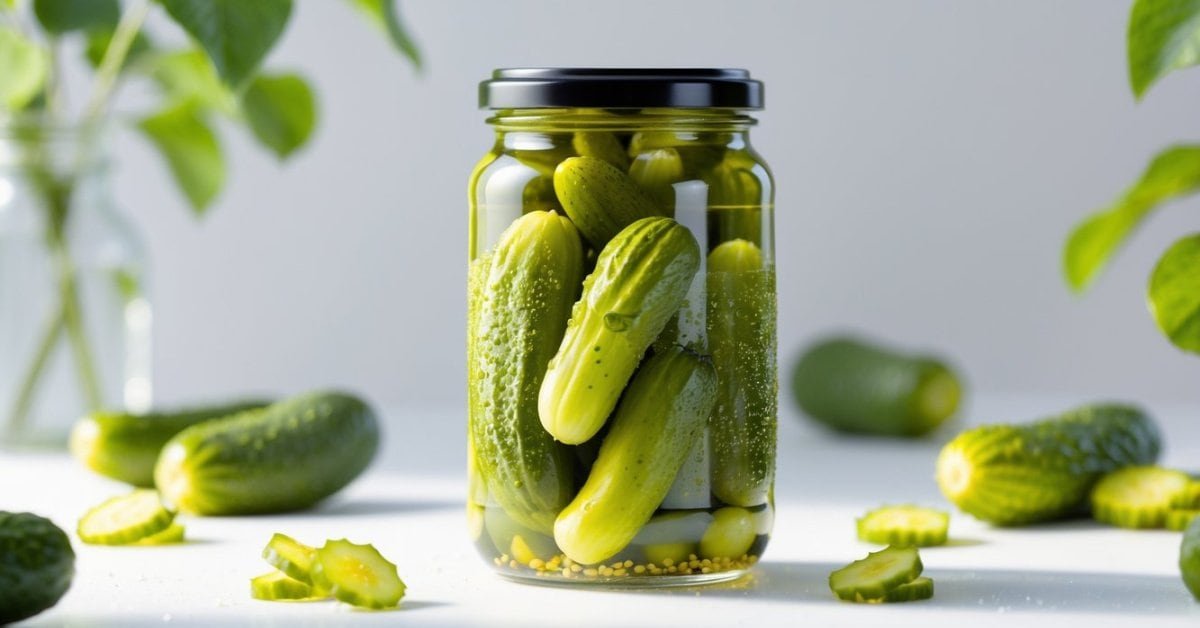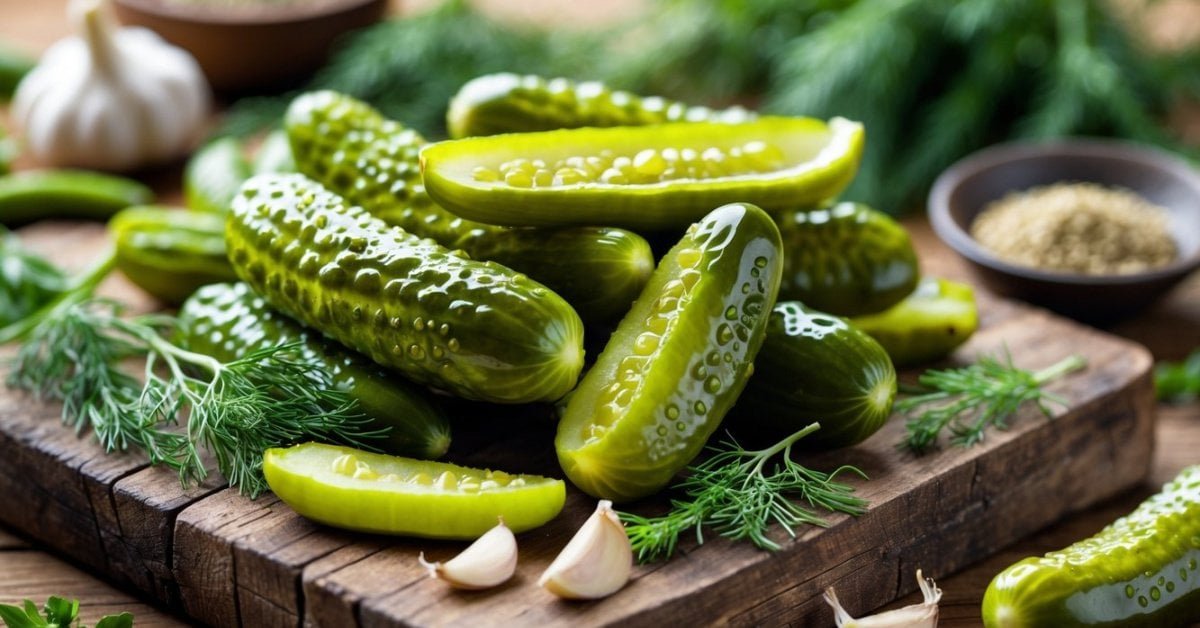There’s just something about the sweet crunch of bread and butter pickles that takes me back to family picnics and summer lunches. Their bright flavor and zippy tang always add a little magic to burgers or sandwiches and I can never resist sneaking a few straight from the jar.
I love how easy it is to whip up a batch at home with just a handful of simple ingredients. Whether you’re new to pickling or a seasoned pro these pickles bring a perfect balance of sweetness and tanginess that’s hard to beat. If you’re looking for a way to capture a bit of summer in a jar you’re in the right place.
What Are Bread and Butter Pickles?
Bread and butter pickles are classic sweet-tangy cucumber pickles, known for their balance of sugar and vinegar. I make mine with sliced cucumbers, sweet onions, white vinegar, granulated sugar, salt, and spices like mustard seed, celery seed, and turmeric. These ingredients create the signature golden color and layered flavor profile.
This pickle style dates back to early 20th-century Midwestern homesteads. Unlike dill pickles, bread and butter varieties rely on higher sugar content and milder spice blends. I often preserve batches in pint jars for later use on burgers, deli sandwiches, and as a garden-fresh relish.
Texture in these pickles remains crisp when using firm slicing cucumbers, such as ‘Marketmore’ or ‘Boston Pickling’, from my own garden. When compared to gherkins or kosher dills, bread and butter pickles contain larger, uniform slices and feature a gentler tartness, making them a favorite for those preferring less bite and more sweetness.
Most home canning guides, including Ball Blue Book and the USDA Complete Guide to Home Canning, list this recipe as ideal for beginners due to its straightforward brine and forgiving preservation method. I find they store well for months in a cool pantry, letting me enjoy homegrown flavor well beyond summer harvests.
Key Ingredients in Bread and Butter Pickles: A Sweet-Tangy Recipe
Cucumbers anchor every bread and butter pickle recipe, with fresh slicing cucumbers ensuring that unmistakable crispness. I handpick firm, blemish-free cucumbers from my own garden, slicing each about 1/4 inch thick for best texture.
Sweet onions deliver the signature mild flavor in classic bread and butter pickles. Vidalia or Walla Walla varieties excel for their sweetness, and I slice them into half-moons to weave between cucumber layers.
White vinegar drives the tangy profile and preserves the tomatoes’ color. I select distilled white vinegar at 5% acidity to guarantee both food safety and the classic bright look.
Granulated sugar blends into the brine, providing the crucial sweet note that distinguishes bread and butter pickles from sour dills. I measure the sugar with care to control the balance and avoid over-sweetness.
Pickling salt, free from anti-caking agents, keeps the brine clear and intensifies flavors. Using measures specified in tested recipes, I ensure the cucumbers draw and keep their famed crunchy snap.
Mustard seeds, celery seeds, and turmeric compose the traditional spice blend. I combine 1 tablespoon mustard seeds, 1/2 tablespoon celery seeds, and 1 teaspoon turmeric in each batch to add color, hint of pepperiness, and a subtle earthy layer.
Red pepper flakes sometimes accent the sweetness, providing gentle warmth. For a mild batch, I sprinkle about 1/4 teaspoon into the brine.
I group these ingredients to achieve that distinctively sweet-tangy, golden-bright bread and butter pickle every time.
| Ingredient | Function | Quantity (for 6 pints) |
|---|---|---|
| Slicing cucumbers | Crunch, base vegetable | 10-12 small (about 8 cups sliced) |
| Sweet onions | Mild, sweet flavor | 2 cups, sliced |
| White vinegar (5%) | Tang, preservation | 2 cups |
| Granulated sugar | Sweetness | 2 cups |
| Pickling salt | Brine clarity, flavor | 1/4 cup |
| Mustard seed | Spice, subtle heat | 1 tbsp |
| Celery seed | Herbaceous note | 1/2 tbsp |
| Turmeric | Color, earthiness | 1 tsp |
| Red pepper flakes | Optional, gentle kick | 1/4 tsp |
Step-by-Step Guide to Making Bread and Butter Pickles
Bread and butter pickles deliver their signature sweet-tangy bite through a careful method. I rely on precise preparation and timing to guarantee crunch and flavor in every jar.
Preparing the Vegetables
I start by scrubbing and slicing fresh, unwaxed slicing cucumbers—about 1/4-inch thick for consistent texture and quick brine penetration. I use firm cucumbers picked the same day, as older ones soften too much. Then, I slice sweet onions thinly for even layering. For six pint jars, I combine 12 cups cucumber slices and 3 cups sliced onions in a large, nonreactive bowl. I toss in 1/4 cup pickling salt, cover everything with ice cubes and let it rest for 2 to 4 hours. This process draws out excess moisture and crisps the vegetables. Once brined, I rinse the vegetables under cold water and drain them thoroughly in a colander.
Creating the Pickling Brine
I blend 3 cups white vinegar (5% acidity), 2 cups granulated sugar, 1 tablespoon mustard seeds, 1.5 teaspoons celery seeds, and 3/4 teaspoon turmeric in a nonreactive pot. If I want a little heat, I add up to 1/2 teaspoon red pepper flakes. I bring the mixture to a boil, stirring until all sugar dissolves, then reduce the heat and simmer for 5 minutes to marry the flavors. I add the drained cucumber and onion mixture to the brine, letting everything heat just until the slices turn olive green—about 5 minutes—but never let it boil to preserve crunch.
Packing and Processing the Pickles
I pack hot vegetable slices tightly into warm, sterilized pint jars, leaving 1/2 inch of headspace. I pour boiling brine over the vegetables, covering them completely but maintaining headspace. I remove air bubbles using a chopstick or non-metallic spatula, then wipe the jar rims clean and seal with two-piece lids. I process the jars in a boiling water bath for 10 minutes, ensuring water covers jars by at least 1 inch. After removing jars, I let them cool undisturbed for 12 to 24 hours, checking seals before storing in a cool, dark place. Properly processed bread and butter pickles remain shelf-stable for up to a year, intensifying in flavor after a few weeks.
Tips for Perfect Bread and Butter Pickles Every Time
- Use Firm Slicing Cucumbers
Fresh, unblemished slicing cucumbers give bread and butter pickles a crisp bite. I harvest mine early in the day for best texture, and I avoid any with soft spots.
- Slice Evenly for Consistency
Uniform cucumber and onion slices, about 1/4 inch thick, promote even brining and a pleasant crunch. I use a sharp mandoline slicer for reliable results.
- Brine with Ice and Salt
Chilling sliced cucumbers and onions in pickling salt with ice for at least 2 hours pulls out excess moisture and keeps the pickles crunchy. I increase the ice on hot days to ensure maximum crispness.
- Measure Vinegar Acidity
White vinegar with exactly 5% acidity preserves both tang and food safety. I check every new jug’s label, especially when buying in bulk.
- Balance Sugar and Spice
Granulated sugar levels directly affect flavor and shelf life. I stick to tested ratios, typically 2 cups per every 3 cups vinegar for six pint jars, to preserve the distinctive sweet-tangy profile.
- Prep Jars and Tools Properly
Sterilized jars prevent spoilage and off flavors in bread and butter pickles. I boil jars for 10 minutes and keep them hot until use.
- Avoid Overpacking Jars
I pack the cucumbers and onions loosely, letting the brine flow around every slice. Packed too tightly, pickles lose texture and don’t absorb brine evenly.
- Choose the Right Pickling Salt
Non-iodized pickling salt maintains brine clarity and prevents bitterness. Table salt with additives clouds brine and gives an off flavor.
- Heat Brine to a Boil
I simmer vinegar, sugar, and spices until fully dissolved and fragrant, then pour the hot mixture over the vegetables for thorough infusion and color.
- Seal While Hot
Lids form a strong seal if applied immediately after filling the jars. I process jars in a boiling water bath for 10 minutes for shelf stability.
- Store for Flavor Development
Freshly canned bread and butter pickles taste best if left for at least 2 weeks. I label each jar with the processing date to track readiness.
- Keep Pickles Cool and Dark
Storing jars in a cool, dark pantry maintains flavor and texture for up to 12 months. I rotate my stock, using older jars first.
These habits combine gardening, pickling, and food sustainability, letting me enjoy these sweet-tangy pickles all year.
Serving Suggestions and Pairings
I often reach for bread and butter pickles when I want to add a sweet-tangy contrast to everyday dishes. These crisp, flavorful pickles pair seamlessly with grilled meats like pulled pork sandwiches, fried chicken, and hot dogs for a vibrant bite. I find them just as tasty tucked into classic cheeseburgers or layered inside a turkey club for an extra snap of flavor.
I also enjoy serving bread and butter pickles on cheese boards alongside sharp cheddars, aged goudas, and creamy goat cheese—sweetness balances the richness, and the crunch adds pleasant texture. Pickle slices brighten up potato salad, tuna salad, and coleslaw, offering a bit of acidity and sweetness in every forkful.
For more inventive pairings, I top barbecue chicken pizza or pulled jackfruit sliders with a few slices, or use chopped pickles in salads with grains like barley or farro to boost complexity. Bread and butter pickles taste excellent next to cured sausages, pâtés, and rustic breads on a charcuterie plate. When I serve deviled eggs or egg salad, I often garnish with a few pickle slices for both color and flavor lift.
A few popular ways to enjoy bread and butter pickles appear in the table below:
| Dish Category | Example Dish | Pairing Benefit |
|---|---|---|
| Burgers/Sandwiches | Cheeseburger, Turkey Club | Adds sweet-tangy crunch |
| Picnic Salads | Potato Salad, Coleslaw, Tuna Salad | Brightens and balances |
| Cheese Boards | Cheddar, Goat Cheese, Aged Gouda | Contrasts richness |
| BBQ/Grilled Foods | Pulled Pork Sandwich, Fried Chicken | Cuts through savory flavors |
| Charcuterie | Sausage, Pâté, Rustic Bread | Complements cured meats |
Because I garden, I always look for ways to use these pickles in garden-fresh meals—layer them on veggie wraps, spoon them onto roasted vegetable plates, or chop them into salsa with homegrown peppers. Bread and butter pickles fit into a sustainable, homestead table any day of the week.
Conclusion
There’s something truly special about opening a jar of homemade bread and butter pickles and tasting the sweet-tangy crunch that brings back memories of summer days. I love how these pickles add a little extra magic to any meal and offer a taste of the garden all year long.
If you’re looking for a simple kitchen project that delivers big rewards these pickles are a wonderful place to start. I hope you enjoy making and sharing them as much as I do.

